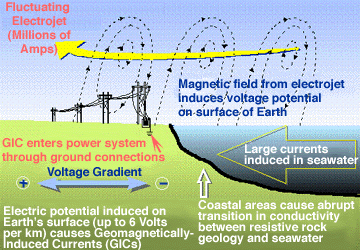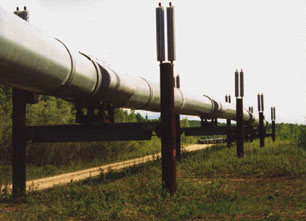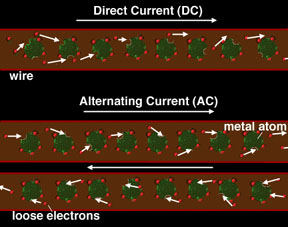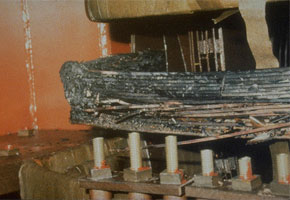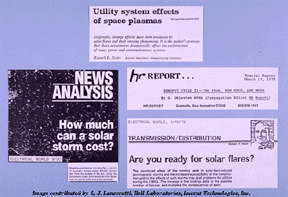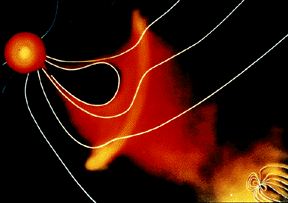Click on image for full size
Image courtesy John G. Kappenman, Minnesota Power, Duluth, Minnesota.
Space Weather Causes Currents in Electric Power Grids
Electric currents in Earth's atmosphere can induce currents in our planet's crust and oceans. Electromagnetic induction works on a grand scale during space weather disturbances. Currents as large as a million-amperes flow through the ionosphere at high latitudes producing the aurora and atmospheric heating effects. These currents are not steady but are fluctuating constantly in space and time. Fluctuating currents produce unsteady magnetic fields that are felt at the Earth's surface. These constantly changing magnetic fields cause currents to flow in large-scale conductors, both natural (like the rocks in Earth's crust or salty ocean water) and man-made structures (like pipelines, transoceanic cables, and power lines). This induced flow can interfere with the normal operation of electric power grids.
During large magnetic storms, the intense currents flowing in the ionosphere induce currents in the Earth's surface called GICs (ground induced currents). Some rocks carry current better than others. Igneous rocks do not conduct electricity very well so the currents tend to take the path of least resistance and flow through man-made conductors that are present on the surface (like pipelines or cables). Regions of North America have significant amounts of igneous rock and thus are particularly susceptible to the effects of GICs on man-made systems. Currents flowing in the ocean contribute to GICs by entering along coastlines. GICs can enter the complex grid of transmission lines that deliver power throughout the U.S. and other parts of the world through their grounding points. The GICs are direct current (DC) flows. Under extreme space weather conditions, these GICs can cause serious problems for the operation of the power distribution networks by disrupting the operation of transformers that step voltages up and down throughout the network.


